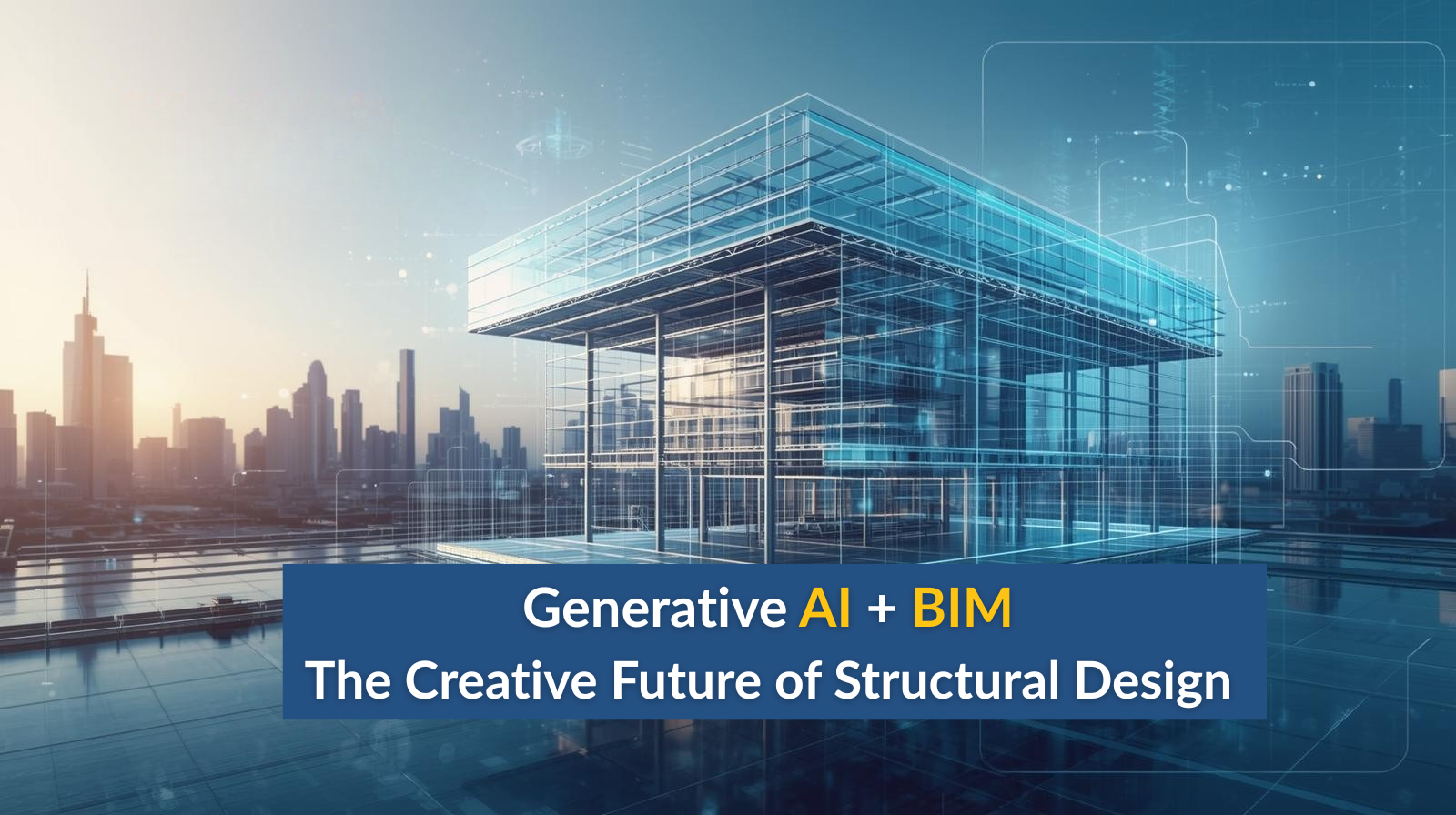In the ever-evolving world of architecture, engineering, and construction (AEC), two powerful forces are coming together to reshape the way buildings are designed and delivered: Generative AI and Building Information Modelling (BIM). While BIM has long been the backbone of digital construction documentation and coordination, the rise of Generative AI offers an entirely new layer of creativity, efficiency, and predictive intelligence.
What is Generative AI in Structural Design?
Generative AI refers to algorithms that can create design options autonomously, based on defined parameters and constraints. In structural engineering, this means AI can:
- Explore hundreds of possible design iterations in minutes
- Optimise structures for cost, material efficiency, and sustainability
- Predict structural performance under different load conditions
- Suggest innovative forms that balance aesthetics with feasibility
When integrated with BIM platforms like Revit or Tekla, Generative AI doesn’t just visualise buildings — it co-designs them with engineers and architects.
Why Generative AI + BIM is a Game Changer
- Smarter Design Exploration – Instead of manually testing different approaches, AI generates multiple feasible structural layouts, saving time and uncovering unexpected yet efficient solutions. 2
- Performance-Driven Modelling – By simulating structural loads, wind conditions, and seismic activity, AI-infused BIM ensures designs meet safety codes with fewer revisions.
- Sustainability at the Core – AI can optimise for materials, suggesting greener alternatives and reducing waste while maintaining structural integrity.
- Faster Documentation – Generative AI can automate parts of the drawing and detailing process, freeing engineers from repetitive tasks.
Real-World Applications Emerging in 2025
- Generative AIBIM Models: Research-driven frameworks now combine BIM with physics-aware AI, producing designs that meet real-world structural codes without manual recalculations.
- Bridge & Infrastructure Design: AI is helping engineers optimise span lengths, material usage, and load distribution in large-scale public projects.
- Adaptive Facades: AI algorithms generate building envelopes that adjust for sunlight, ventilation, and energy efficiency while remaining structurally sound.
- Renovations & Retrofits: By analysing scan-to-BIM models, AI suggests reinforcement strategies for older buildings, ensuring compliance with modern standards.
What This Means for US & Canadian Construction Firms
For AEC firms across the US and Canada, where labour shortages and tight deadlines are common, the synergy of Generative AI and BIM delivers:
- Up to 40% reduction in design cycles
- Clash-free models with fewer RFIs (Requests for Information)
- Lower material costs through optimised usage
- Competitive advantage by adopting future-ready workflows
Firms in Texas, Florida, California, and Illinois—already leading in BIM adoption—stand to benefit the most by integrating AI-powered BIM into large infrastructure and housing projects.
How eLogicTech Can Help
At eLogicTech Solutions, we’re at the forefront of BIM outsourcing and digital engineering innovation. Our structural teams combine deep expertise in Revit, Tekla, AutoCAD, and Navisworks with emerging Generative AI tools to deliver:
- Structural modelling from LOD 100 to LOD 500
- AI-assisted clash detection and optimisation
- Sustainability-focused design solutions
- Rapid project turnaround with global delivery expertise
Whether you’re a builder, architect, or engineering consultancy, we help you leverage AI and BIM together for smarter, faster, and more resilient designs.
Final Thought
Generative AI isn’t here to replace engineers and architects—it’s here to empower them. By marrying creativity with computational power, Generative AI + BIM represents the future of structural design: intelligent, sustainable, and limitless in possibility.







